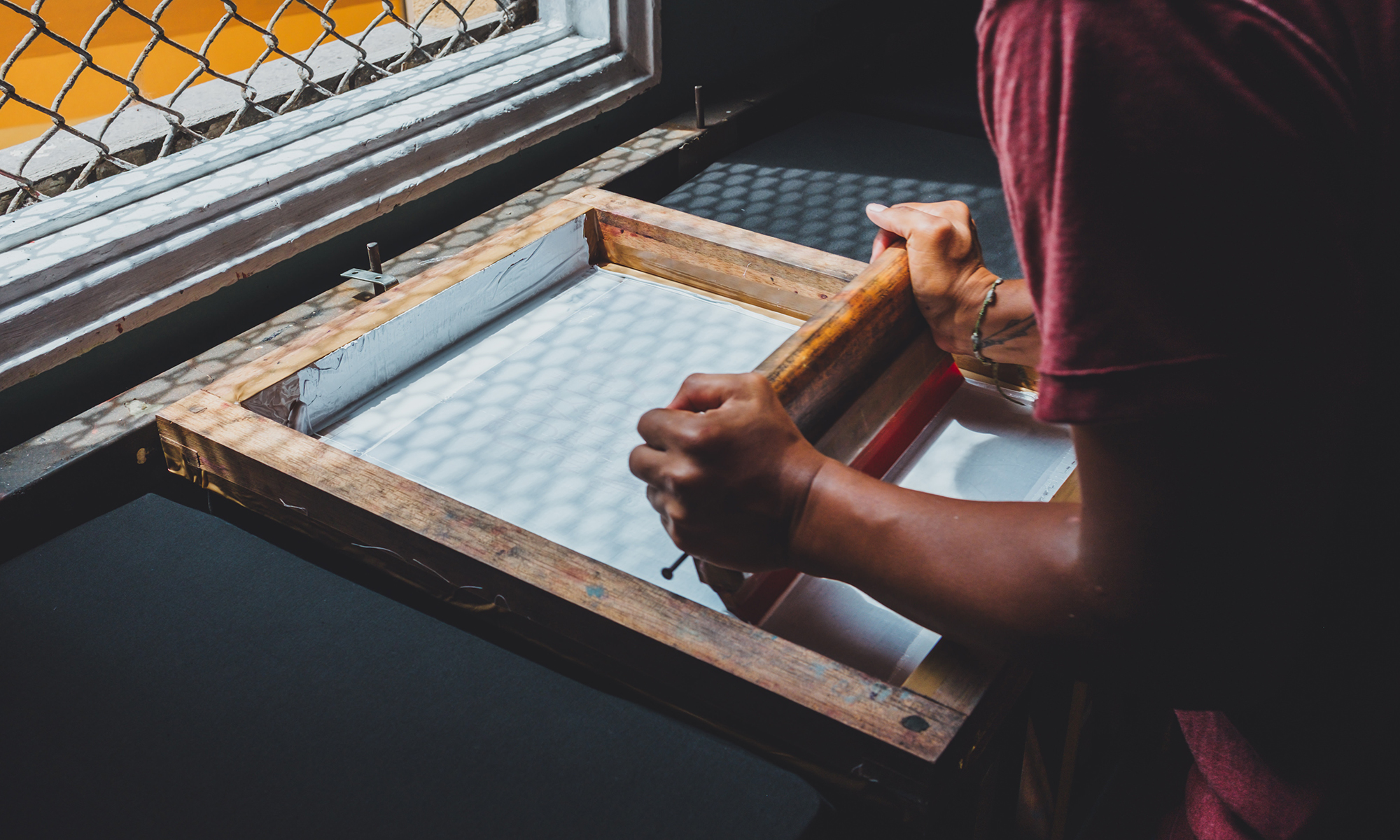Screen printing has been around since the early 1900’s. Originally used as an industrial manufacturing process, screen printing was soon adopted by graphic artists for its low cost and versatility in printing on a variety of objects.
In Silkscreening, the screen is made of a finely woven fabric (while it was originally made of silk, modern day screens are typically polyester or nylon). This screen is stretched across a wood or aluminum frame, where it is mounted with a length of cord and staples.
Once the screen is mounted to the frame, areas of the screen are blocked off with a non-permeable material, creating a positive of the image to be printed—a stencil. The screen is than positioned on top of a piece of paper or fabric. Screen printing ink is then placed on the screen and is evenly “pulled” down the screen, pushing the ink through the stencil openings and onto the material below. Once the screen is lifted away, the printed image is ready for drying. Depending on the processed used to apply your stencil, the screen can be cleaned and reused multiple times with the same stencil. Once you are ready to create a new design, the stencil can be removed from the screen, and the screen may be rejuvenated and a new stencil applied.
